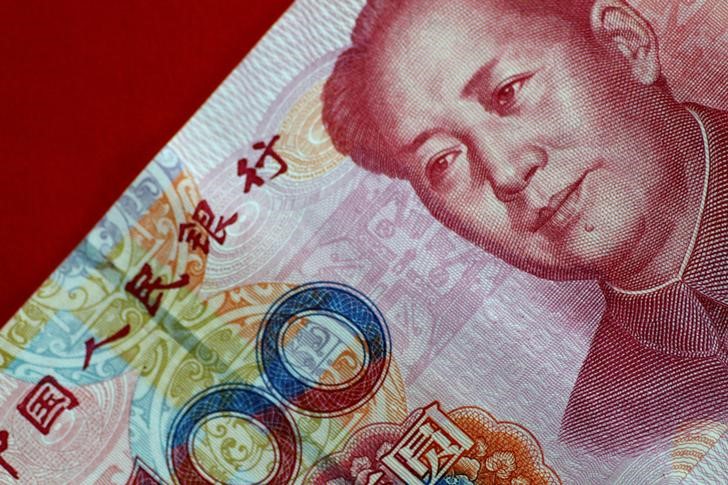(Bloomberg) -- China will soon provide a hint on how far it will let the yuan’s slide go after the offshore rate sank overnight to match its weakest level on record.
A weaker-than-expected fixing will show greater tolerance for depreciation, while a stronger rate will reflect preference for limiting declines. The People’s Bank of China’s daily reference rate, which limits the onshore yuan’s moves by 2% in either direction, is published at 9:15 a.m. local time. Rates set on Monday and Tuesday were both the softest in more than a decade.
“There will likely be more pressure on the yuan,” said Khoon Goh, head of Asia research at Australia & New Zealand Banking Group Ltd. “Today’s fix itself will be closely watched for signs of whether the authorities are seeking to slow down the recent weakness.”
The offshore yuan tumbled to 7.1965 per dollar in U.S. trading Wednesday as tensions between Washington and Beijing escalated over China’s controversial security law for Hong Kong. The Trump administration said it could no longer certify the city’s political autonomy, a decision that could lead to sanctions for top Chinese officials or tariffs on goods coming from the former British colony.
The Chinese embassy in the U.S. said it would take “necessary countermeasures” against what it called “foreign meddling in Hong Kong affairs.”
From its daily fixings to mopping up liquidity in Hong Kong, China’s central bank has many tools at its disposal should it wish to steer the currency. But declines can get extreme when key support lines are broken, like last August when the yuan weakened past 7 per dollar for the first time since the global financial crisis. Moves can also accelerate when the PBOC is seen allowing for weakness -- in early 2018, the yuan fell the most in two months as authorities gave banks the green light to submit quotes for weaker fixings.
The reference rate is decided based a formula that takes into consideration of the onshore yuan’s official close at 4:30 p.m. on the previous day and major currencies’ moves overnight.
The offshore yuan dropped 0.05% to 7.1802 per greenback as of 8:11 a.m. in Hong Kong. Onshore trading starts at 9:30 a.m.
©2020 Bloomberg L.P.
